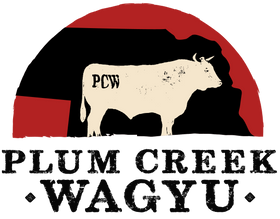Wagyu beef is renowned for its marbling, tenderness, and rich flavor, making it a prized delicacy across the globe. But behind every succulent steak lies a story steeped in history, culture, and tradition. The journey of Wagyu cattle from Japan to American tables is a fascinating tale that spans centuries, evolving from a breed used for labor to the luxury meat we savor today.
The Origins of Wagyu
The word Wagyu translates to “Japanese cattle” (wa meaning Japanese and gyu meaning cow), and it is believed that the breed's history dates back over 2,000 years. Originally, Wagyu cattle were used as draft animals, essential for plowing rice fields in Japan. During this period, the animals were primarily bred for strength and endurance, rather than for meat production.
In the 19th century, Japan began to modernize, and the agricultural and industrial sectors saw significant changes. During this time, efforts were made to improve the quality of Wagyu cattle, particularly focusing on meat production. The development of the breed was further influenced by crossbreeding with imported Western cattle, such as British and European breeds, which enhanced the marbling and overall quality of the meat.
The Unique Characteristics of Wagyu
What sets Wagyu apart from other beef is its extraordinary marbling. Marbling refers to the fine streaks of fat dispersed within the muscle tissue, and in Wagyu beef, these streaks are uniquely dense and fine, creating a melt-in-your-mouth texture. This marbling is a result of careful breeding practices that prioritize the genetic predisposition for fat distribution.
In Japan, Wagyu beef is categorized into four main breeds: Japanese Black, Japanese Brown, Japanese Shorthorn, and Japanese Polled. Of these, the Japanese Black breed is most renowned for producing the high-quality, marbled beef that defines Wagyu. The meticulous care given to the cattle, including special diets, massages, and stress-reduction techniques, is a testament to the high standards of Japanese farming practices.
Wagyu's Global Journey
Wagyu remained a prized delicacy in Japan for centuries, and it wasn’t until the 1970s that the breed made its way to the United States. In the early stages, American cattle ranchers struggled to replicate the quality of Japanese Wagyu beef, as the environmental conditions and farming practices in the U.S. were vastly different from those in Japan.
Over time, however, American ranchers, particularly in states like Texas and Nebraska, began to develop their own Wagyu herds through selective breeding, using both full-blood Wagyu cattle and crossbreeds. These efforts have led to the production of Wagyu beef in the U.S. that rivals its Japanese counterpart in terms of marbling and tenderness.
Today, Wagyu beef is produced in various countries, including Australia, Canada, and Argentina, but it is the U.S. that has seen a particularly significant rise in demand. American Wagyu is prized for its versatility, often used in high-end restaurants, luxury gift boxes, and premium retail outlets.
Wagyu in American Kitchens
The rise of Wagyu beef in the U.S. has sparked a culinary revolution, with chefs and home cooks alike experimenting with the meat's exceptional qualities. In American kitchens, Wagyu has become a symbol of luxury and indulgence. Its rich flavor profile, buttery texture, and melt-in-your-mouth tenderness elevate everything from burgers and steaks to sushi and stir-fries.
As American consumers become more knowledgeable about the origins and quality of Wagyu, they seek out this rare delicacy for special occasions and gifts. Restaurants and retailers now offer a variety of Wagyu cuts, ranging from tenderloin and ribeye to more affordable options like burgers and hot dogs.
The Legacy of Wagyu
The history of Wagyu is a remarkable tale of tradition, innovation, and cultural exchange. From its humble beginnings as a labor animal in ancient Japan to its current status as a globally sought-after delicacy, Wagyu continues to capture the hearts and palates of meat lovers worldwide. As the breed's legacy grows, so does the appreciation for the artistry behind its production.
Today, Wagyu represents more than just a type of beef; it is a symbol of luxury, craftsmanship, and the culmination of centuries of tradition and innovation. Whether enjoyed at a high-end restaurant or in the comfort of home, Wagyu beef offers a culinary experience that transcends borders and connects us to the rich history of Japanese culture.
Related Posts
Sustainability in Wagyu Ranching: How Plum Creek Wagyu is Committed to the Environment
Explore how Plum Creek Wagyu is committed to sustainability with practices like rotational grazing, water conservation, humane treatment of cattle, and more. Learn about our efforts to produce high-quality beef while protecting the environment.
Wagyu Beef vs. Angus Beef: A Flavor Showdown
Discover the differences between Wagyu beef and Angus beef in this comprehensive showdown. Learn about flavor, texture, and the overall eating experience to determine which premium beef is right for you.
Wagyu Beef Recipes for Every Season: From Summer Grilling to Winter Braising
Explore seasonal Wagyu beef recipes perfect for any time of the year. From summer grilling to cozy winter braises, discover easy and delicious ways to incorporate premium Wagyu into your meals.
Health Benefits of Wagyu Beef: Why It's a Premium Choice
Discover the health benefits of Wagyu beef, from its heart-healthy monounsaturated fats to its higher levels of omega-3 fatty acids and CLA. Learn why Wagyu beef is a premium choice for those seeking a flavorful yet healthier alternative to traditional meats.
Pairing Wagyu Beef with Wines: A Guide to the Perfect Match
Discover expert tips on pairing Wagyu beef with the perfect wines. From Ribeye to Filet Mignon, explore the best wine matches to elevate your dining experience and make every bite of Wagyu beef unforgettable.
The History and Origins of Wagyu Beef: From Japan to Nebraska
Explore the rich history of Wagyu beef, tracing its origins from ancient Japan to the modern-day farms of Nebraska. Learn about the unique breeding practices and cultural significance of Wagyu, and discover how Plum Creek Wagyu brings this exceptional beef to your table.








